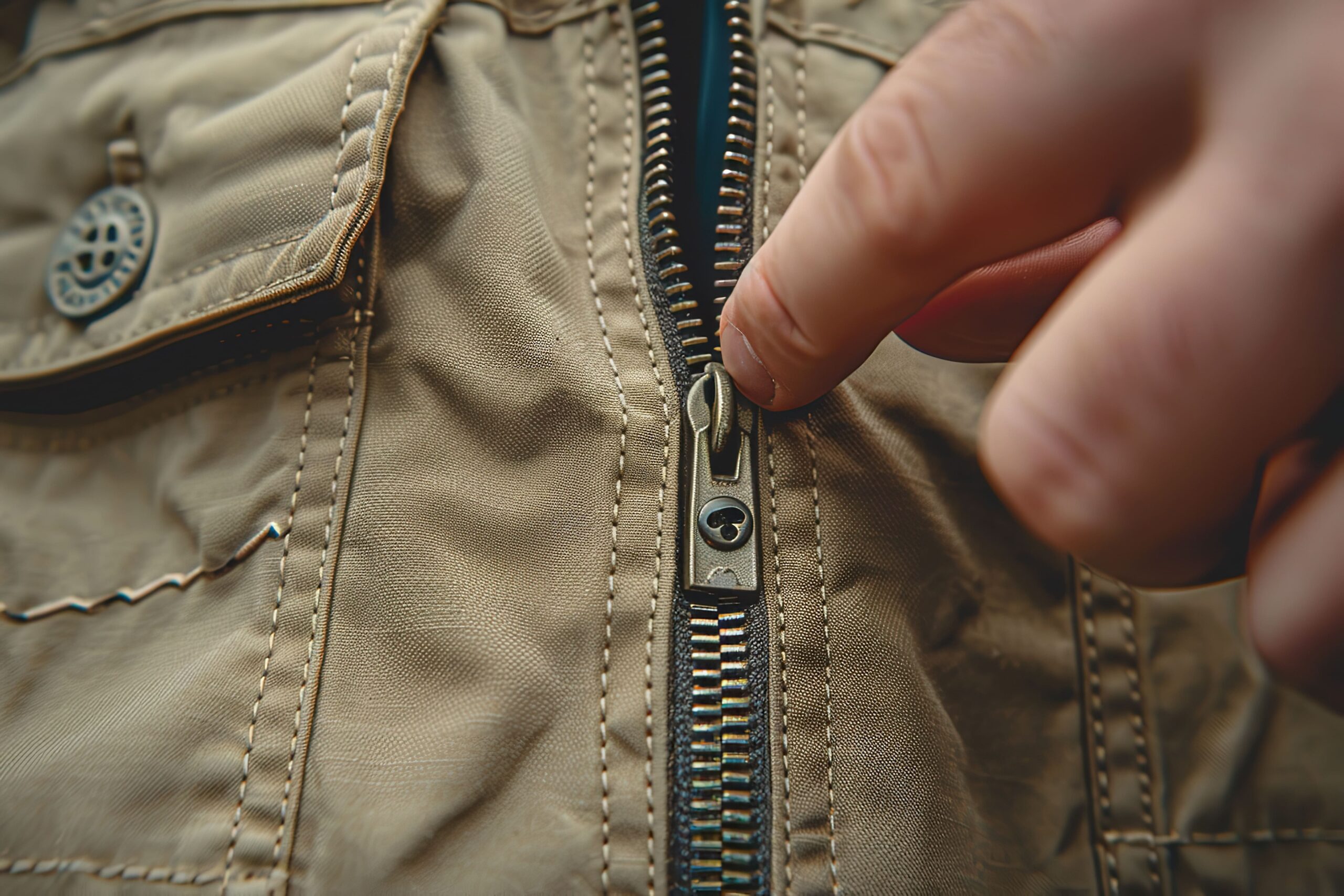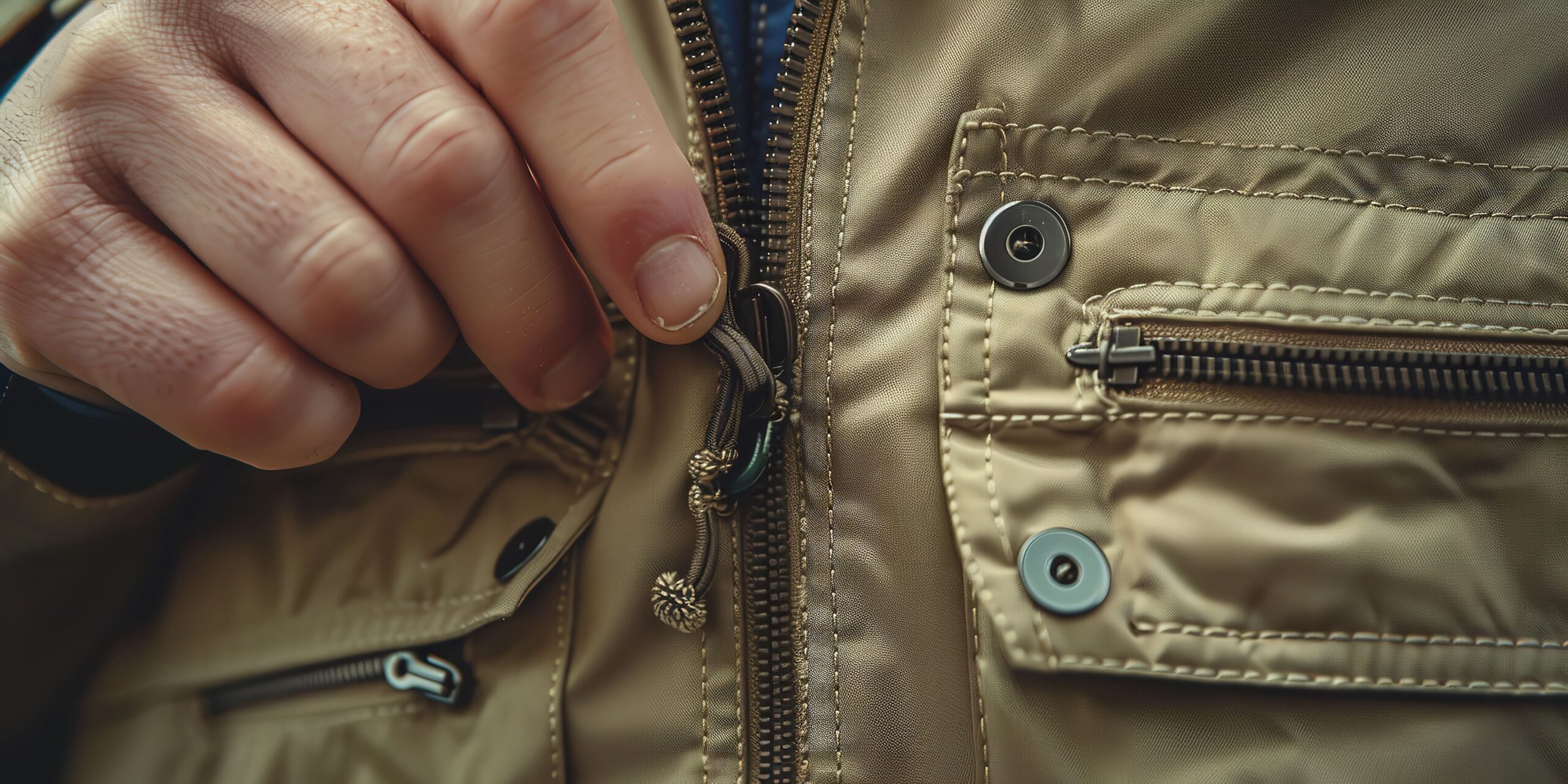In aerospace engineering, every detail matters — and even the smallest component must meet uncompromising performance standards. From pilot suits and cargo restraints to cabin covers and aerospace seating, zippers play a vital yet often invisible role in aviation textiles.
Unlike fashion or general industrial use, aerospace zippers must endure extreme temperatures, vibration, pressure differentials, and chemical exposure — all while meeting strict FAA and MIL-SPEC certification requirements. The result is a field where zipper engineering becomes a science of safety and reliability.
LenZip, an American zipper manufacturer with decades of technical experience, produces high-performance flame-resistant and aerospace-grade zippers engineered for mission-critical environments. This guide explains how zipper design adapts to aviation and aerospace needs, what materials and coatings are used, and how rigorous testing ensures compliance with global flight standards.
Why Aerospace Demands Specialized Zippers
In commercial and defense aviation, textiles aren’t just coverings — they’re integrated safety systems. Cabin partitions, protective suits, insulation wraps, and containment barriers all rely on zippers for controlled access or emergency release.
However, these zippers must withstand environments that are drastically different from typical terrestrial applications. In flight, they face rapid temperature swings, static buildup, pressure changes, and potential exposure to hydraulic fluids or fuel vapors. A standard nylon or metal zipper simply can’t survive such conditions without degradation.
Aerospace zippers are therefore engineered with specialized tapes, coatings, and sliders that provide flame resistance, chemical stability, and electrostatic discharge (ESD) control. Every element is chosen to ensure that the closure won’t compromise the safety or functionality of the aircraft or equipment it supports.
Learn more about zipper materials and finishes engineered for harsh environments.

Material Science Behind Aerospace Zippers
Aerospace-grade zippers are defined by material selection — every polymer, coating, and metal must meet strict thresholds for heat tolerance, tensile strength, and non-toxicity.
For most aviation textile applications, meta-aramid and para-aramid fibers (such as Nomex® and Kevlar®) are used for zipper tapes. These materials resist combustion and retain tensile strength beyond 400°F, ensuring that the zipper remains functional even in fire or high-heat conditions.
The chain itself can be composed of stainless steel, brass, or high-temperature polymers, depending on the balance required between strength and weight. Stainless steel is often preferred in cargo containment and structural applications for its corrosion resistance and mechanical integrity.
In lighter interior applications — such as seat covers or insulation barriers — LenZip offers high-strength polyester or meta-aramid coil zippers that meet the same fire-retardant requirements while reducing total system weight.
The company’s Zipper Materials & Finishes program allows OEM engineers to select the ideal combination of tape fiber, coating, and slider finish for each use case.
Flame Resistance and Thermal Stability
Fire safety is a cornerstone of aerospace textile compliance. Every zipper component must meet flammability and heat-resistance standards such as FAR 25.853, which governs interior aircraft materials, and MIL-C-83420, the U.S. military standard for flame-resistant closures.
To comply, LenZip uses flame-retardant coatings and inherently non-combustible fibers. Meta-aramid tapes, for instance, will not sustain combustion even when exposed to open flame, and they emit minimal smoke or toxic gases.
Metal components are treated with heat-resistant platings or passivation processes that prevent oxidation under high temperature. When tested under ASTM E1354 cone calorimetry and ISO 15025 vertical burn testing, these assemblies maintain structural integrity long after conventional textile closures have failed.
This combination of heat resistance and low smoke toxicity makes aerospace zippers essential for both commercial airliners and defense-grade protective systems.
For additional testing context, explore Zipper Testing Standards.
Electrostatic and EMI Considerations
In high-altitude and pressurized environments, static buildup can pose operational hazards. Electrostatic discharge (ESD) may interfere with avionics or cause ignition risks around sensitive components. To mitigate this, aerospace zippers often incorporate conductive threads or anti-static coatings woven directly into the tape.
LenZip engineers use carbon-impregnated polymers and anti-static yarns that allow static electricity to dissipate gradually rather than accumulate. For electromagnetic interference (EMI) shielding applications — such as instrument covers or electronics enclosures — zipper tapes can be lined with conductive foils that maintain grounding continuity across seams.
These advanced constructions are tested under ASTM D257 for surface resistivity and verified through shielding effectiveness evaluations in accordance with MIL-STD-285. The result is a closure that not only performs mechanically but also contributes to overall aircraft electrical safety.
Chemical Resistance and Corrosion Control
Aerospace maintenance and operation expose materials to hydraulic fluids, de-icing agents, and aviation fuels. Zippers used in these environments must resist chemical degradation and corrosion.
LenZip’s plasma-bonded and Teflon® coatings prevent absorption and chemical attack, ensuring that polymer chains remain stable under exposure to fluids like Skydrol® or Jet A. Metal teeth and sliders are plated with nickel or chromium for corrosion resistance, while stainless steel versions provide the highest protection for fuel-resistant enclosures or external components.
Testing under ASTM D543 and ASTM B117 corrosion testing confirms that these zippers retain full mechanical integrity after extended immersion or salt-spray exposure. This makes them suitable for both pressurized cabin interiors and exposed aerospace structures where durability is non-negotiable.
Testing and Certification Standards
Aerospace and aviation zippers are validated under multiple overlapping standards — ASTM, ISO, FAA, and MIL-SPEC. Tensile and fatigue testing follows ASTM D2061, measuring crosswise strength and slider durability. Environmental aging is evaluated through ISO 4892 accelerated weathering, while corrosion and chemical resistance follow ASTM B117 and D543.
Fire performance is verified through FAR 25.853 for flame propagation and ISO 15025 for ignition and self-extinguishing time.
Each zipper is assigned a full traceability record that ties back to batch-level test results. LenZip’s Zipper Testing Standards documentation allows OEM engineers to review tensile data, burn results, and fatigue cycles before integration.
For military and aerospace contracts, LenZip also provides Certificates of Conformance (C of C) verifying compliance with MIL-SPEC and FAA test protocols.
Integration into Aviation Textiles
Integrating zippers into aerospace textiles involves balancing accessibility and safety. In pilot suits or containment garments, zippers must open smoothly under pressure without creating snag points or heat transfer paths. In cargo or cabin applications, they must maintain airtight or fire-resistant barriers without compromising structural strength.
Zipper seams are typically sewn using aramid or PEEK threads and reinforced with high-temperature adhesives. In some cases, the tape is heat-sealed or RF-welded to compatible materials for added containment.
Designers also consider pull-tab size and ergonomics, especially for gloved operation or emergency release systems. LenZip provides custom sliders and pullers designed for use with aviation gloves and under rapid deployment scenarios.
By combining user-focused design with mechanical and environmental testing, aerospace zipper assemblies provide both accessibility and security in mission-critical operations.
Maintenance, Inspection, and Service Life
Aerospace zippers undergo continuous maintenance cycles. FAA Part 145 regulations require aircraft components — including textile closures — to be inspected for wear, corrosion, and fatigue. Regular cleaning and lubrication prevent buildup of dust or hydraulic residues that can compromise slider function.
LenZip recommends periodic maintenance using non-reactive lubricants approved for aviation use. This preserves zipper mobility without attracting particulates. The company’s Zipper Maintenance & Care guidelines include cleaning protocols and inspection intervals specifically for high-performance assemblies.
When properly maintained, aerospace zippers can remain in service for years, matching the lifespan of the textile systems they’re built into.
The Role of U.S. Manufacturing in Aerospace Compliance
Domestic manufacturing isn’t just a supply chain advantage — it’s a compliance benefit. FAA and military procurement require strict traceability, which is best achieved through U.S.-based zipper production.
LenZip manufactures all aerospace and aviation zippers domestically under ISO 9001 and AS9100-aligned quality systems. This allows for direct oversight, reduced lead times, and immediate documentation access.
U.S. production also ensures material origin control — critical when dealing with export-controlled or ITAR-sensitive components. OEMs working in defense, space, or government sectors can rely on LenZip for verified compliance and documentation integrity.

Future Directions in Aerospace Zipper Engineering
As aerospace materials evolve, so do the closures that hold them together. Research is underway into ultra-light carbon-fiber composite zippers that reduce weight while maintaining metallic strength.
Other advancements include nanoceramic coatings for extreme heat resistance, smart textile integration for condition monitoring, and 3D-printed slider prototypes for rapid development.
LenZip’s ongoing R&D initiatives focus on improving flame resistance and EMI shielding efficiency without increasing system mass — a balance crucial for modern aerospace design. Each innovation reinforces LenZip’s long-standing philosophy: that even the smallest component deserves aerospace-level engineering precision.
Learn More
In aerospace and aviation, reliability is measured in fractions of failure. Every zipper, seam, and fastener contributes to safety, performance, and mission readiness.
LenZip’s U.S.-made aerospace zippers are designed to exceed ASTM, ISO, and FAA standards while providing the customization and traceability OEMs require. From heat-resistant Nomex® tape to corrosion-proof stainless-steel chains, each zipper is built for endurance in the world’s harshest environments.
Request aerospace-grade zipper specifications or test documentation via the Request a Quote form.
Frequently Asked Questions
- What standards govern aerospace zipper materials?
Zippers must meet FAA FAR 25.853 flammability requirements, MIL-SPEC standards, and ASTM D2061 for tensile strength. LenZip tests to all these benchmarks in-house.
- What materials are best for aviation-grade zippers?
Meta-aramid and para-aramid tapes combined with stainless steel or brass chains provide the best balance of flame resistance and mechanical strength. Learn more about Zipper Materials & Finishes.
- Can aerospace zippers resist hydraulic fluid or fuel exposure?
Yes. LenZip’s coated and plasma-treated zippers pass ASTM D543 chemical testing for compatibility with Skydrol®, de-icers, and fuel-grade solvents.
- Do LenZip aerospace zippers meet MIL-SPEC documentation requirements?
Absolutely. Each batch is traceable and shipped with Certificates of Conformance (C of C) for defense or aerospace procurement compliance.
- Can LenZip customize zippers for my aerospace application?
Yes. LenZip designs and tests custom zipper assemblies for specific fire, EMI, or environmental conditions. Request a consultation via LenZip’s engineering team.
